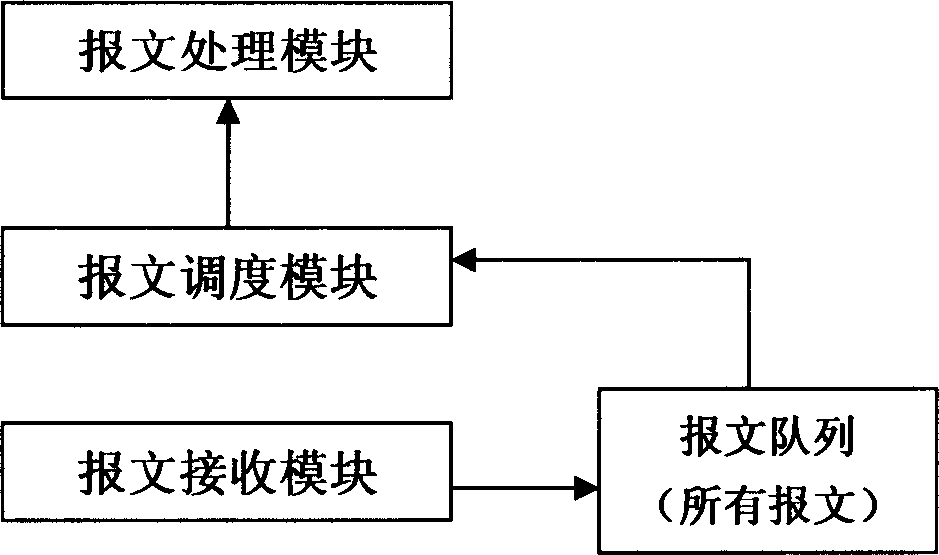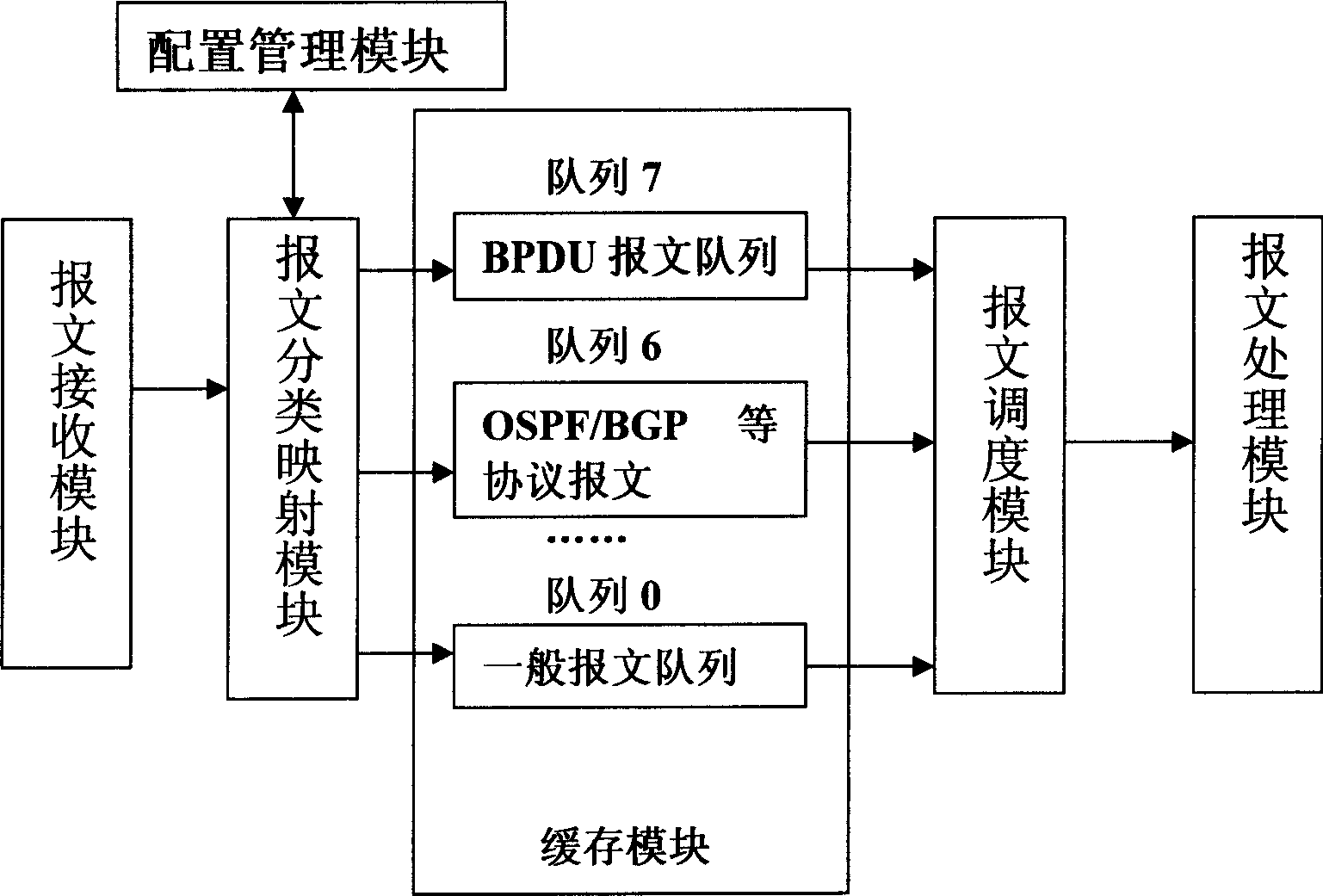Method and device for strengthening safety of protocol message
A technology of protocol messages and messages, applied in digital transmission systems, electrical components, transmission systems, etc., can solve the problems of protocol message processing delay, limited number of messages, protocol message discarding, etc., and reduce maintenance costs , Improve timeliness and continuity, and improve stability
- Summary
- Abstract
- Description
- Claims
- Application Information
AI Technical Summary
Problems solved by technology
Method used
Image
Examples
Embodiment Construction
[0029] Below in conjunction with accompanying drawing, technical solution of the present invention is described further:
[0030] The device for enhancing protocol packet security in this embodiment is as follows: figure 2 As shown, it includes a message receiving module, a configuration module, a message classification and mapping module, a message cache module, a message scheduling module, and a message processing module, and each module is realized by corresponding software and hardware on a three-layer network device. in:
[0031] The message receiving module is used to receive various messages sent to the device, including data messages and protocol messages.
[0032] The configuration module is used to provide a man-machine interface, and set its priority according to the message type, and the message that needs to be processed first has a higher priority.
[0033] The message classification mapping module is used to determine the type of the message according to the ...
PUM
 Login to View More
Login to View More Abstract
Description
Claims
Application Information
 Login to View More
Login to View More - R&D
- Intellectual Property
- Life Sciences
- Materials
- Tech Scout
- Unparalleled Data Quality
- Higher Quality Content
- 60% Fewer Hallucinations
Browse by: Latest US Patents, China's latest patents, Technical Efficacy Thesaurus, Application Domain, Technology Topic, Popular Technical Reports.
© 2025 PatSnap. All rights reserved.Legal|Privacy policy|Modern Slavery Act Transparency Statement|Sitemap|About US| Contact US: help@patsnap.com


